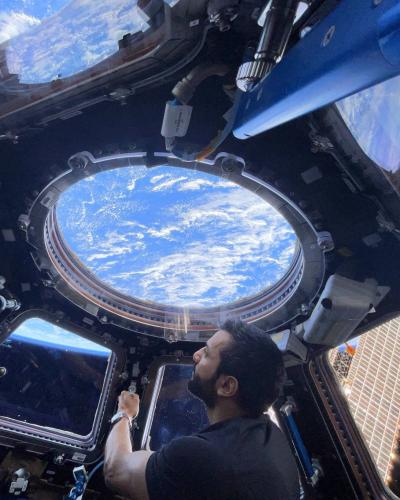The "Dragon" spacecraft carrying the "Crew 6" team, which includes Emirati astronaut Sultan Al Neyadi, landed on Earth this morning, Monday, according to a video released by the official Emirates News Agency (WAM). The crew consists of four astronauts who conducted a scientific mission aboard the International Space Station for six months before returning to Earth, with their spacecraft landing in Florida, USA.
The Dragon spacecraft separated from the International Space Station earlier on Sunday before entering the atmosphere on Monday. The crew spent the day aboard the "Crew Dragon" spacecraft, which is 13 feet wide, as it traveled through Earth's orbit toward the landing site off the coast of Jacksonville, Florida, where they landed.
The Crew Dragon capsule traveled at speeds exceeding 17,000 miles per hour (27,000 kilometers per hour), and as it began its final descent phase, the exterior temperature of the spacecraft rose to around 3,500 degrees Fahrenheit (1,900 degrees Celsius) while it passed through the thickest part of Earth's atmosphere. Afterward, the capsule deployed a series of parachutes to further slow its descent. Rescue crews waited near the landing site, prepared to pull the spacecraft from the ocean onto a special boat called "Dragon's Nest," where final safety checks would be conducted before the crew could disembark.
Before leaving the space station, NASA reported that it was monitoring the impact of Hurricane Idalia, which hit the Florida coast on Wednesday morning.
The crew members of "Crew 6" include NASA astronauts Stephen Bowen and Warren Hoburg, along with Sultan Al Neyadi, the second astronaut from the United Arab Emirates to travel to space, and Russian astronaut Andrey Fedyaev. The crew spent six months aboard the orbital laboratory after launching their mission to the station last March. During the past week, the crew members welcomed and handed over operations to the "Crew 7" team, which arrived at the space station on August 27.
During their time in space, the "Crew 6" astronauts were scheduled to oversee more than 200 scientific and technological projects.




